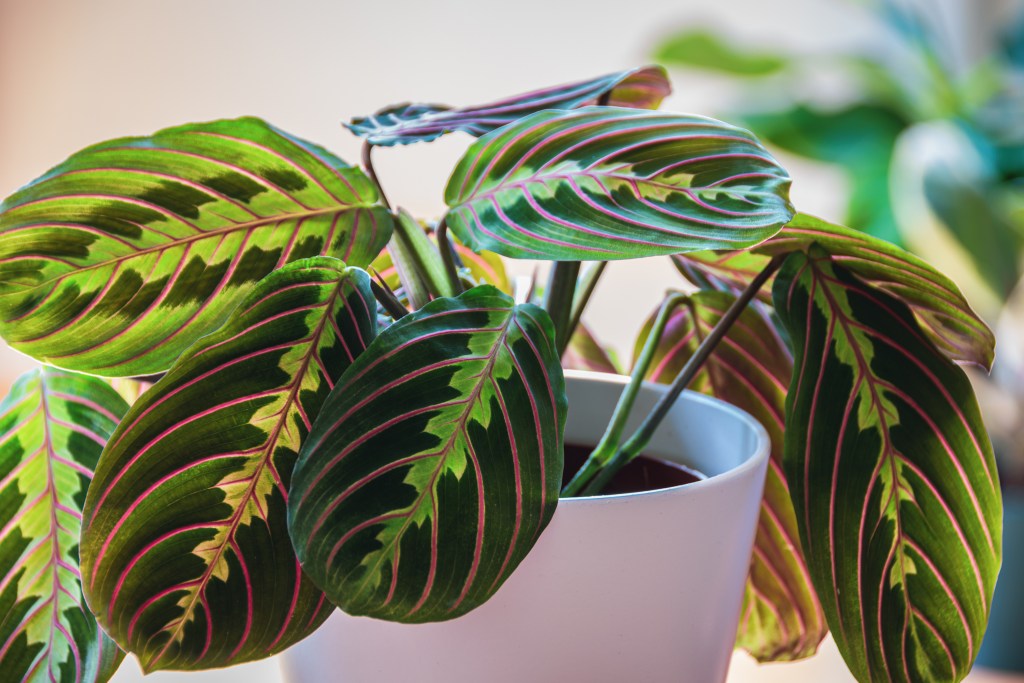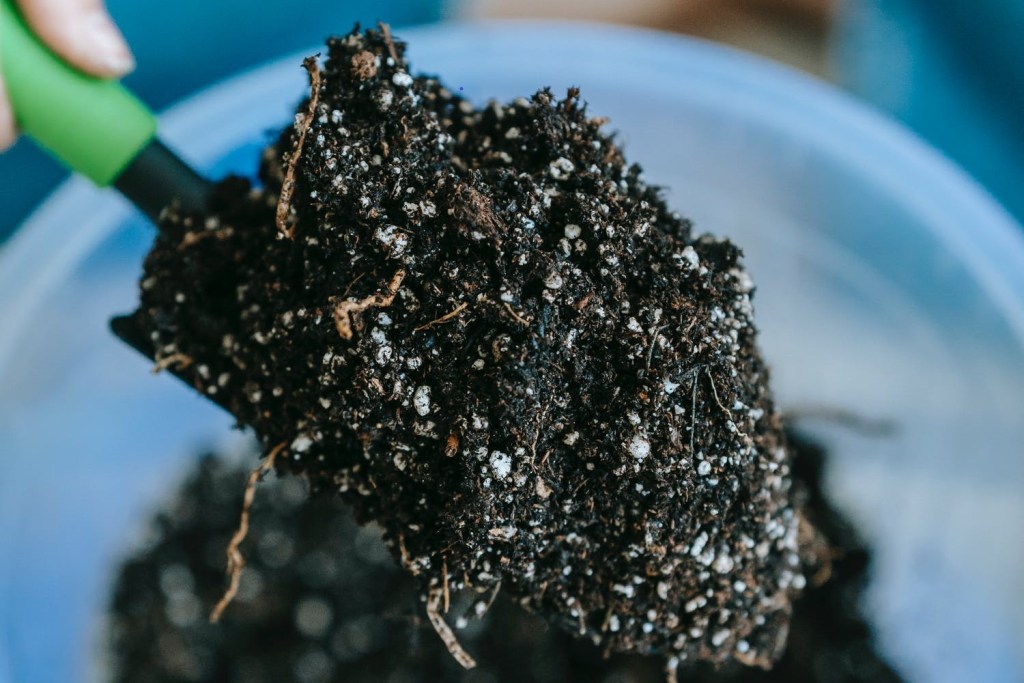The Maranta genus of plants consists of several low-lying species native to Brazil. The prayer plant (Maranta leuconeura) is one of them. During the day, its leaves lie flat. At night, in response to darkness, the leaves fold up like hands in prayer — hence its name. If you look for prayer plants at a garden center, you’ll likely see tricolor varieties that have deep green leaves with yellow splotches and red veins. They grow slowly and can reach a height of about 12 inches.
Caring for these gorgeous plants take a little bit of skill, so here are some important things you should know before you bring one home.

Prayer plants need warm temperatures
Prayer plants are tropical and do well in conditions similar to those in a greenhouse, thriving in temperatures ranging from 60 to 80 degrees Fahrenheit. If it gets too cold for an extended period of time, a prayer plant’s leaves can curl or fall off, or a fungal infection can develop and may ultimately kill the plant.
Don’t place it directly in front of a window because that can scorch the leaves or cause them to develop brown patches or blotches. Direct sunlight can also make the plant’s color fade and give it a washed-out appearance.
In the winter, your prayer plant will go into dormancy. During that season, expose it to brighter (but still indirect) light so it can keep growing.
Use the right type of soil and fertilizer
Prayer plants need well-draining, acidic soil with a pH between 5.5 and 6.0. You can use a traditional potting mix or make a potting mix by combining two parts sphagnum peat moss and one part each of loamy soil and either perlite or coarse sand. Make sure the pot has enough drainage holes in the bottom, and feel free to put rocks or gravel in the bottom to improve drainage.
Prayer plants need fertilizer, but too much can slow down or even halt the growth process. The plant’s roots can burn, its leaves can turn brown, and the plant can die. For best results, use a water-soluble fertilizer designed for houseplants and dilute it to half-strength. From early spring through fall, fertilize your prayer plant every other week. Cut back to once a month during the winter.
Make sure your prayer plant gets plenty of water – but not too much
Since prayer plants are tropical, they need a humid environment to flourish. If your prayer plant doesn’t get enough water, the leaves can droop, turn brown, curl, and may even die. To keep it healthy, ensure the soil never becomes completely dry, so remember to check the soil frequently and add room temperature water whenever the top layer is dry. To make sure your plant gets enough moisture, you can mist the leaves with water, run a humidifier nearby, or fill a tray with small stones and water and set the prayer plant on top.
If the leaves develop spots or turn yellow, that may be due to fluoride, chlorine, or another substance in your tap water. Try using distilled water instead.
Be careful not to give your prayer plant too much moisture. Overwatering, letting your prayer plant get soggy, or allowing water to sit on the leaves can cause fungus to develop. If your prayer plant has yellow spots that turn tan and have yellow halos, that can be a sign of a fungal disease. You can treat it with a houseplant fungicide. To keep your plant healthy, water it in the morning so the soil can dry out during the day. Don’t allow water to accumulate in the saucer under the plant.

Recognize and deal with a pest problem
Pests such as spider mites and mealybugs may target your prayer plant. The tell-tale sign of an infestation is leaves that turn brown or have a white, powdery substance on them. You can use neem oil or another natural insecticide to take care of the problem.
Why is my prayer plant not praying?
Prayer plants typically move throughout the day and, as mentioned above, fold their leaves to mimic prayer hands.
If your prayer plant stops moving, that doesn’t necessarily mean that there’s a problem. If you don’t see any other warning signs, like browsing or yellowing leaves, the plant may be fine. If you notice other signs of a problem, your prayer plant may be reacting to a change in temperature, light, or humidity, or to shock from being transplanted. Once you determine the issue, address it directly.
If you find success with your first prayer plant and you’d like to raise more, you can divide your original plant. Shake soil from the roots and separate them, leaving each new plant with a healthy number of roots and stems. Put the new plants into shallow pots and keep them in a very warm area with plenty of moisture until they begin to grow.
Prayer plants may require more work than other types of houseplants, but the beautiful leaves and tropical aesthetic are worth it.




